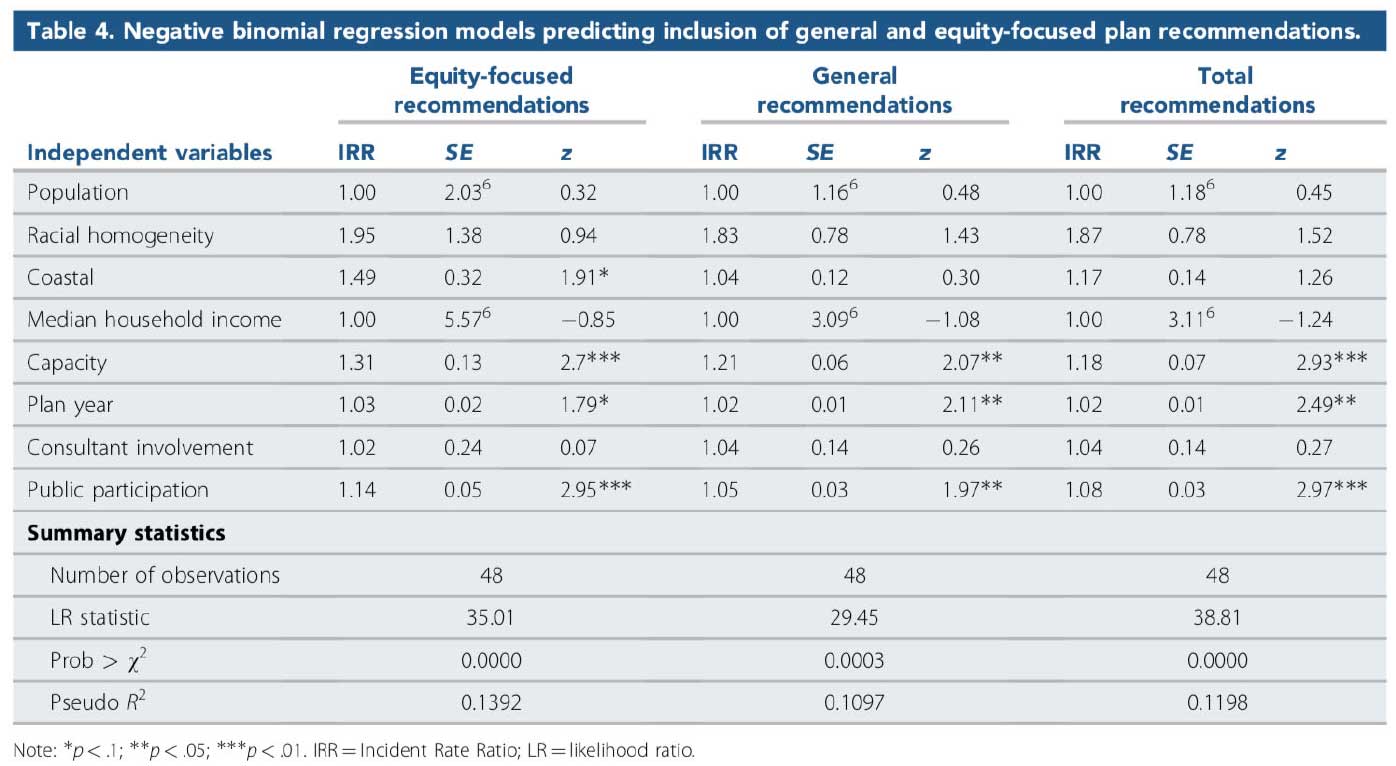Uncovering JAPA
Are We Planning for Equity? Equity Goals and Recommendations in Local Comprehensive Plans

Planning simultaneously deals with goals of economic development, environmental protection, and social equity. Scott D. Campbell, in his 1996 article, described the balancing act between these goals as the "planner's triangle." Although the AICP Code of Ethics requires planners to promote social equity, it is often forced into the back seat while economic development, and to a lesser extent environmental protection, take the reins in comprehensive plans and urban development. At a time of heightened social and economic inequalities caused by a combination of the COVID-19 pandemic, the global climate crisis, and the over-policing of Black and Brown bodies across the U.S., it is particularly important to re-evaluate urban and regional plans to ensure that planners approach all aspects of the built environment through an equity lens.
In "Are We Planning for Equity? Equity Goals and Recommendations in Local Comprehensive Plans" in the Journal of the American Planning Association (Vol. 87, No. 2) authors Garolyn G. Loh and Rose Kim ask "To what extent and in what ways do local governments include goals and recommendations that would advance equitable outcomes in their comprehensive plans." The study, conducted in partnership with the Michigan Association of Planning (MAP) Social Equity Committee, created a publicly available comprehensive plan equity evaluation tool. Based on a dual-coded content analysis they evaluated 48 local comprehensive plans from the state of Michigan. The authors chose to focus on comprehensive plans because they are publicly available documents that anyone could evaluate without any specialized knowledge and because these plans aim to set goals and objectives that drive subsequent policy.
Local Comprehensive Plans Lack Equity Focus
The study found that fewer than half the plans mentioned equity at all and many plans did not include race and income in their demographic analyses. Only 46 percent of the plans contained one or more of the words 'equity', 'equality', 'fairness', or 'justice.' Once the standard language of the Complete Streets policy was removed, this number dropped down to about one-third.
The authors expected that newer plans, plans for more diverse communities, plans created by planning departments with higher capacity (measured by number of planners on staff), and plans with more robust public participation processes would have a stronger focus on equity. The analysis only supported some of these hypotheses. Racial homogeneity and median household income were not significant in any of the models, however planning capacity, plan year, and participation were highly significant. For every additional public participation mode used, a plan would have 14 percent more equity-focused recommendations, and for every additional planner on staff, all other variables being constant, a community's plan would be expected to include 31 percent more equity-focused recommendations (see Figure 1 for a detailed overview of the results).

Table 4: Regression results predicting equity focus of plan recommendations.
Equity Central to Planning Process
The authors note that "because planning involves redistribution of public resources and facilities, equity is an inescapable fact of planning" and therefore, "continuing to marginalize equity in plans should no longer be acceptable." Their findings also point to the importance of the question of agency and inclusion in the planning process. In other words, in the quest to plan and develop more just cities, those who have a say in the making of the plan matter. While it is disappointing that only a portion of the plans mentioned equity, it is promising to see that simply adding more planners to the staff increased the focus on equity dramatically. Based on this analysis, it seems that the task is simple: to ensure that plans are created by planners (who seem to already have a predisposition to focus on matters of equity) and that planners always work through deep collaboration with the communities they serve.
Top Image: Downtown Kalamazoo Michigan. Photo DenisTangneyJr / iStock / gettyimages.com.


